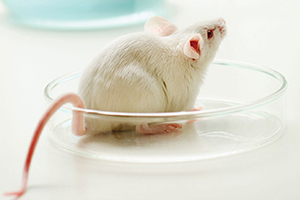Until the advent of humanized mice, immuno-oncology drugs were tested in mouse models that did not fully recapitulate the human immune response. This led to more drug failures and created a need for mouse models that could better predict drug successes or failures prior to clinical trials. In a recent article published in Genetic Engineering & Biotechnology News, Taconic Biosciences' Dr. Michael Seiler is quoted as stating that "Upon engraftment with human hematopoietic stem cells, the hGM-CSF/hIL-3 transgenic-NOG host results in a human-like immune system that includes mature granulocytes, monocytes, macrophages, B cells, and T cells, extending the limits of existing engrafted human immune system models". The CIEA NOG mouse® and its transgenic variations is described as the "first and most versatile severely immunodeficient model on the market" and is therefore a perfect option for xenograft and human cell engraftment studies:
 "Flying in space can be a bit like growing old, because without exercise and proper nutrition astronauts on weeks- or months-long missions would come back to Earth with difficulties staying balanced, with weaker bones and muscles, and with other health problems that are usually confined to seniors or those with disease.
"Flying in space can be a bit like growing old, because without exercise and proper nutrition astronauts on weeks- or months-long missions would come back to Earth with difficulties staying balanced, with weaker bones and muscles, and with other health problems that are usually confined to seniors or those with disease.
To help better understand these effects, a new investigation on the International Space Station (ISS) will study aging and how the age of mice living in microgravity affects the progression of symptoms that mimic some human diseases." Read more about how humanized mice are changing the drug discovery process at: GenEngNews.com
 "Flying in space can be a bit like growing old, because without exercise and proper nutrition astronauts on weeks- or months-long missions would come back to Earth with difficulties staying balanced, with weaker bones and muscles, and with other health problems that are usually confined to seniors or those with disease.
"Flying in space can be a bit like growing old, because without exercise and proper nutrition astronauts on weeks- or months-long missions would come back to Earth with difficulties staying balanced, with weaker bones and muscles, and with other health problems that are usually confined to seniors or those with disease. To help better understand these effects, a new investigation on the International Space Station (ISS) will study aging and how the age of mice living in microgravity affects the progression of symptoms that mimic some human diseases."






.jpg)

.jpg)
.jpg)
.jpg)
.jpg)





.jpg)
.jpg)


.jpg)



.jpg)




.jpg)

.jpg)
.jpg)



